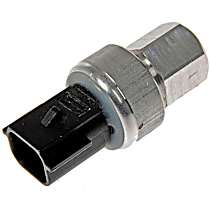{
"lazyNodes": false,
"abFitnotesFlag": false,
"abCrawlReviews": false,
"productOptionsCookie": false,
"orderDelayFlag": false,
"skipSessionCookie": false,
"covidMessage": false,
"fullTitleCookie": false,
"nrLoggerCookie": false,
"checkoutReviewCookie": false,
"productOptionSeqCookie": false,
"maintenanceFlag": false,
"bufferETACookie": false,
"multiShippingDiscountFlag": false,
"newFitmentFlag": false,
"surveyOptInFlag": false,
"crossSellFlag": false,
"skuMappingFlag": false,
"paySplitCookie": false,
"callDisableFlag": false,
"zipPaymentFlag": "u",
"hassleFreeReturn": false,
"lifetimeReplacement": false,
"cpn_off": false
}Need Help? Call Us1-866-529-0412
2017 Ford F-150
2017 Ford F-150 HVAC Pressure Switches
Refine by:
Shop Catalog
Showing 1 - 1 of 1 results
Sort by:
Part Number: RB904612
Guaranteed to Fit
$43.99
Vehicle Fitment
- 2017 Ford F-150 All Submodels All Engines
Product Details
Notes : 5 VDC; 1 amps Rating; 500 PSI Pressure Reading; 260 PSI Pressure Limit Closed; 475 PSI Pressure Limit Open; R134A Refrigerant Type; Bolt On Mounting Type; 10 mm Thread Diameter; Metal Housing MaterialProp 65 Warning :
![]() WARNING: This product can expose you to chemical which is known to the State of California to cause cancer and birth defects or other reproductive harm. For more information go to www.P65Warnings.ca.gov.
WARNING: This product can expose you to chemical which is known to the State of California to cause cancer and birth defects or other reproductive harm. For more information go to www.P65Warnings.ca.gov.
Page 1 of 1 | Showing 1 - 1 of 1 results
Popular Products

DormanOE Solutions Series HVAC Pressure SwitchManufacturer #904-612
( Reviews) Questions, Answers
DORMAN OE REPLACEMENT HVAC PRESSURE SWITCH
Affordable, directly compatible and built to last, Dorman’s OE replacement HVAC Pressure Switch stands out as the smart option. Since 1918, Dorman Products has supplied the automotive aftermarket with high-qua...
Helpful Automotive Resources
Where Is the A/C Low-Pressure Switch Located?
Pro Tip:
On cold days even if the refrigerant isn’t low, the compressor will cycle because when it comes to refrigerant, low ambient temperature means lower pressure.



